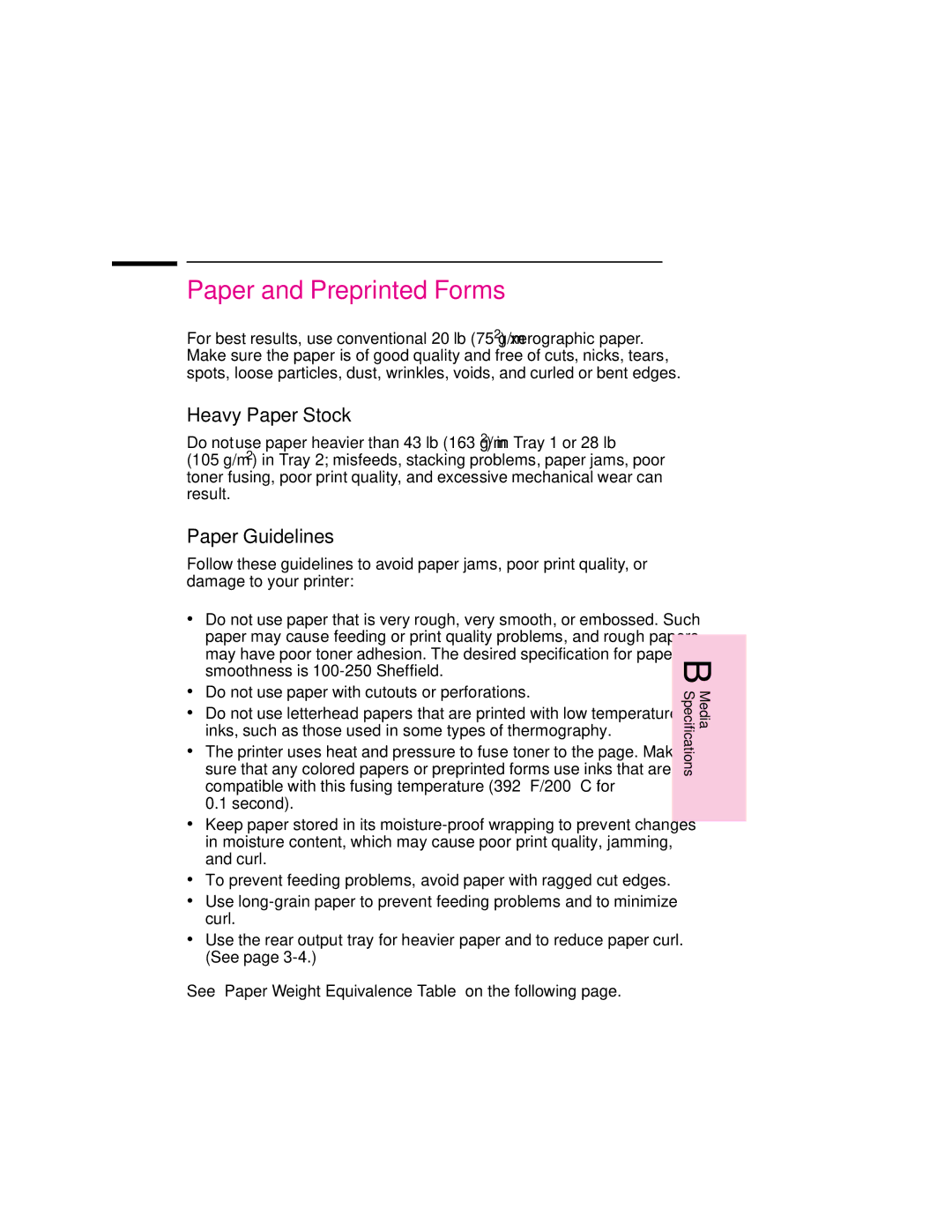
Paper and Preprinted Forms
For best results, use conventional 20 lb (75 g/m2) xerographic paper. Make sure the paper is of good quality and free of cuts, nicks, tears, spots, loose particles, dust, wrinkles, voids, and curled or bent edges.
Heavy Paper Stock
Do not use paper heavier than 43 lb (163 g/m2) in Tray 1 or 28 lb (105 g/m2) in Tray 2; misfeeds, stacking problems, paper jams, poor toner fusing, poor print quality, and excessive mechanical wear can result.
Paper Guidelines
Follow these guidelines to avoid paper jams, poor print quality, or damage to your printer:
∙Do not use paper that is very rough, very smooth, or embossed. Such paper may cause feeding or print quality problems, and rough papers may have poor toner adhesion. The desired specification for paper smoothness is
∙Do not use paper with cutouts or perforations.
∙Do not use letterhead papers that are printed with low temperature inks, such as those used in some types of thermography.
∙The printer uses heat and pressure to fuse toner to the page. Make sure that any colored papers or preprinted forms use inks that are compatible with this fusing temperature (392° F/200° C for
0.1 second).
∙Keep paper stored in its
∙To prevent feeding problems, avoid paper with ragged cut edges.
∙Use
∙Use the rear output tray for heavier paper and to reduce paper curl. (See page
See “Paper Weight Equivalence Table” on the following page.
B Media Specifications
EN
Media Specifications
